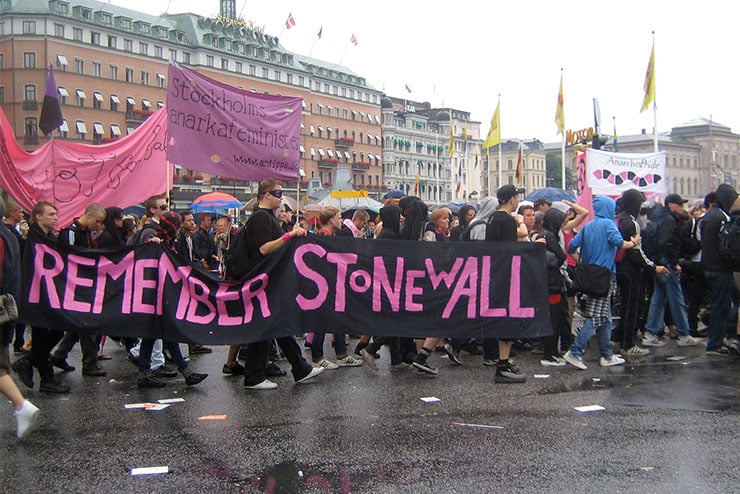The Stonewall Riots in New York City in 1969 were a great, good thing that signaled the beginning of the LGBTQ social and cultural movement, and only positive things flow from them—or so the narrative goes. The “gay liberation” rioters are our heroes and heroines, and police, government, and traditional public opinion, on the other hand, are all monstrous, evil forces who were on the wrong side of history.
As the cultural left engages in its annual celebration of the event—which featured a police raid on the queer nightclub “Stonewall Inn” and soon dissolved into riots—virtually every bit of discussion of the riots reduces to pure celebration. Since there’s a critical spirit in the air these days, in which formerly honored American founders and other key political figures in the early history of our country are denounced, I would like to make a small contribution in that spirit by revealing the darker side of the Stonewall legacy, which is characterized by crime, prostitution, and disease.
Missing in the left’s celebrated retelling of these riots is much of the destructive and deadly behavior that took place in the late 1960s at establishments like the Stonewall. At the time, it was a site notorious for prostitution, which all epidemiologists recognize as an important source of the propagation of sexually transmitted diseases, including HIV. How many homosexual men contracted HIV in acts of prostitution connected to the Stonewall and later died of disease complications, men who would perhaps still be alive if establishments like Stonewall had been shut down, or more rigorously regulated by law enforcement? It’s probably a substantial number.
What is clear is that the AIDS epidemic among homosexual men was driven by high levels of promiscuous and unprotected sexual activity. Many might have been saved if traditional American society had not simply given in to the cultural worldview of the rioting denizens of Stonewall. Even radical activists such as Larry Kramer, the founder of ACT-UP, eventually recognized how much the deadliness of AIDS was related to the extreme libertine view of sexuality propagated by the culture of those rioters.
The Stonewall Inn was also a Mafia-run site of illegal drug dealing. How many people died from the consequences of addiction to heroin and other drugs resulting from the drug trade at the Stonewall, again, people who might still be with us had the establishment been closed or more rigorously policed? Without doubt, more than a few.
Celebration of the Stonewall Riots has been connected explicitly by some high-profile activists to organizations that advocate for the legalization of sexual relations between adults and children, including Harry Hay, an important figure in the modern LGBTQ movement who cofounded the Mattachine Society. Outspoken about including groups such as the North American Man/Boy Love Association (NAMBLA) into the mainstream LGBTQ movement, Hay gave a speech at the Stonewall just prior to the 25th anniversary of the Riots in which he spoke positively about NAMBLA and refused to classify them as advocating sexual violence against children.
One of the celebrated heroes of the Stonewall Riots is Marsha P. Johnson, also known asMalcolm Michaels Jr. Johnson/Michaels, a homeless prostitute who self-identified as a drag queen and admitted to having been arrested more than 100 times, participated in the violence at Stonewall by allegedly throwing bricks at police and dropping a bag full of bricks on a police cruiser from a lamppost. Reputed to have an extremely physically aggressive and violent side, engaging in frequent street fights, Johnson/Michaels may well have suffered from serious mental illness such as schizophrenia. Johnson/Michaels contracted HIV at some point early in the 1990s and died at age 46. The police initially classed the death as a suicide, but it was subsequently reclassified as undetermined amid speculation that the actual circumstances might have involved a street fight. Yet the LGBTQ movement insists on an uncritical hagiography of both Johnson/Michaels and the Stonewall Riots.
Applying the left’s critical historical lens to these cases suggests there is much more reason to treat the unfortunate Johnson/Michaels as an unhappy sufferer of grave psychopathology that should have been properly diagnosed and treated as such, rather than as a culture hero. A critical view such as this should also be applied to the Stonewall Riots. Doing so would require us to move beyond simplistic celebration to an honest investigation of all the lives that were negatively affected, even ruined by what went on at the Stonewall and in other places in America governed by the same cultural worldview.
Image Credit:
Flickr-Andie Nordgren, CC BY-SA 2.0

Leave a Reply